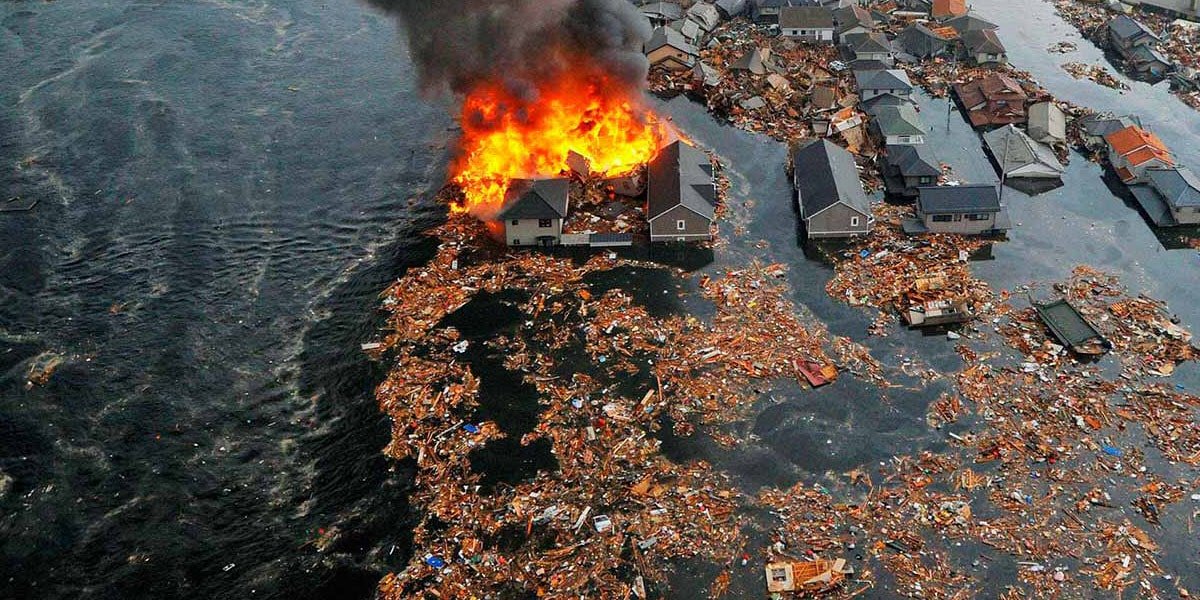

Climate change is a daily hazard for many of the communities that we support and that’s why we are increasing our focus on climate change adaptation – or climate resilience – in order to build stronger, self-reliant and sustainable communities.
We have a core mandate to reduce vulnerability to climate change as safe, decent shelter and settlements provide the platform upon which climate resilience is built. We respond to climate change with a broad range of interventions tailored to each type risk and community.
From theory to harsh reality for many
Climate change impedes progress towards ending extreme poverty and erodes sustainable development. This is especially clear when emergencies strike, disproportionately impacting the poorest and most excluded populations.
As a result of climate change severe weather has become more common and less predictable. From 2004 to 2013, there have been 6,525 reported disasters that affected about 2 billion people, with the majority of incidents occurring in developing countries worldwide. The poorest communities are experiencing a changing risk profile and with new hazards emerging.
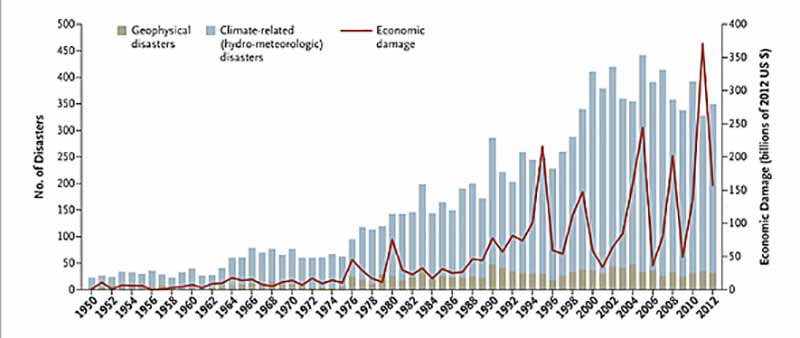
Image courtesy of EM-DAT International Disaster Database, Center for Research on Epidemiology of Disasters, University of Louvain
“There were 3 times as many natural disasters between 2000 to 2009 compared to the amount between 1980 and 1989. A vast majority (80%) of this growth is due to climate-related events” (e.g. typhoons). (Accuweather)
What are climate-related events?
- Floods
- Droughts
- Storms
- Cyclones
- Heat/cold waves
- Wildfire
While some countries experience less precipitation and cooler winters, meaning drought in the summer and heavy snow storms in the winter, other countries will receive more precipitation resulting in more floods and stronger storms. In 2015 alone, economic losses from natural disasters totaled $92 billion.
The poor are the most exposed to climate change
These communities are hardest hit by climate change because they are more likely to live in areas more highly exposed to severe weather because safer areas are more expensive. They are also less able to less able to address climate change through adaptation or risk reduction because of their limited access to human, financial, and institutional capacity.
“Poor people suffer only a fraction of economic losses caused by disasters, but they bear the brunt of their consequences. As climate change magnifies natural hazards, and because protection infrastructure alone cannot eliminate risk, a more resilient population has never been more critical to breaking the cycle of disaster-induced poverty.” (World Bank)
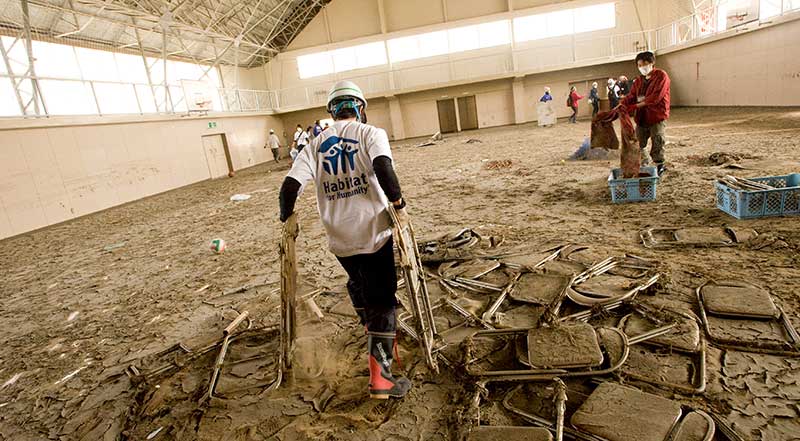
International action around climate change has gathered pace since the creation of the United Nations Framework Convention on Climate Change (UNFCCC) in 1995 and the National Adaptation Programmes of Action (NAPAs) in 20014 .
The Hyogo Framework for Action (HFA) 2001-2015, followed by the Sendai Framework for Disaster Risk Reduction 2015-2030 (SFDRR) and the Paris Agreement of 2016 provide accountability at the highest levels for addressing climate change, and a guiding framework for international development agencies working to support the most vulnerable communities.
Why is climate change adaptation important for Habitat for Humanity?
Climate change is a daily hazard for many of the communities that we support. As a shelter and settlements focused organisation, we witness on a daily basis the negative impacts of climate change on the health, livelihood and property of these communities.
Habitat for Humanity believes that safe, decent shelter and settlements provide the platform upon which climate resilience is built. Adequate housing, which usually represents a family’s most important asset, and healthy settlements play a pivotal role in climate resilience, by reducing the exposure to hazards and protecting the families’ lives and assets.
Communities can be supported to adapt the ways they shelter and settle themselves. To reduce their exposure to the risks of climate change infrastructure can be strengthened, either in advance of an emergency or as part of an emergency response. To contribute to reducing climate change itself more sustainable energy consumption and construction methods can be adopted.
We have a core mandate to reduce vulnerability to climate change with coordinated actions promoting:
- Building safer and more resilient communities, understanding that land, tenure, housing, water and sanitation are critical components to foster climate resilience
- Improving the internal capacities of our teams to build local resilience and serve the most vulnerable, with a strong focus on urban areas, given their exponential growth and the high exposure to risks
- Supporting climate resilience as a national and local priority, contributing to strong governance and participation of the most vulnerable populations in the decision-making processes
This mandate is framed in our “Conceptual Framework for Disaster Risk Reduction and Resilience“, and implemented through our regional and country level strategies.
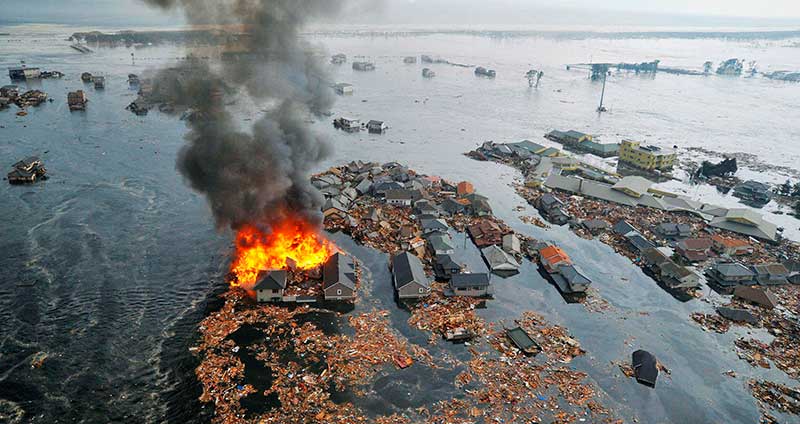
Our climate resilience programmes
We respond to climate change with a broad range of interventions tailored to each community’s vulnerabilities.
- Mitigation
Disaster mitigation measures (structural and nonstructural) in the design and construction of homes and human settlements are considered standard components of our home building programmes.
We support vulnerable communities to strengthen their family and community infrastructure to withstand severe weather events. This includes training families and local craftspeople, promoting climate sensitive materials and reforestation.
- Capacity building
Supporting communities and civil society to be informed, connected and organised to cope with climate change effects and prepare for increased number and intensity of weather related disasters.
Building resilient communities through the participation of vulnerable groups in the identification, assessment and monitoring of exposure to climate change through community-based risk assessment and risk reduction planning tools.
We implement Community Based Disaster Risk Reduction and Management (CBDRR/M), with particular expertise in the Participatory Approach for Safe Shelter Awareness (PASSA), and often in close collaboration with the Red Cross.
- Preparedness
Developing and implementing training programmes and risk management programmes for communities and civil society to be prepared to respond to weather related disasters. Forming coalitions with other nongovernmental organisations and agencies working with the same goal.
We are training our own teams, partner organisations and vulnerable communities to be ready, well informed, and well resourced when emergencies strike.
- Advocacy
Working in alliance with a broad network of organisations to put the concerns, needs and priorities of vulnerable people at the heart of climate change policies and practices.
In particular we work to ensure that policies are appropriate to local context, needs and priorities; to execution of policies at the local level is effective; and to promote increased access to resources to tackle climate change, particularly government funded disaster preparedness. We focus in particular on advocacy to increase tenure security, allowing families to upgrade their homes.
- Financial mechanism
Working with financial entities to promote resources that can be mobilised through credit, microfinance and microinsurance schemes set up specifically as shelter and settlement risk-reduction measures.
We are currently working with international and national insurance companies to develop and pilot insurance products appropriate for vulnerable communities.
- Volunteer mobilisation
Where appropriate, working with volunteers, and in particular private sector staff, in the implementation of disaster risk reduction training, in support of mitigation activities, in the collection of local data, in the realisation of advocacy activities, in awareness raising and in fundraising initiatives for disaster risk reduction.
- Lowering energy use
Identifying alternative energy and materials sources that use less energy to produce, reduce carbon emissions or allow more oxygen to be released. Where communities can benefit we are encouraging the use of more sustainable structural materials such as:
- Bamboo and mulberry wood
- Renovating housing with more energy efficient and cleaner systems for heating and cooking
- Supporting communities to access and construct sustainable energy sources, such as solar grids and low energy stoves.
References
- World Disasters Report 2014, IFRC (International Federation of Red Cross and Red Crescent Societies)
- Unbreakable: Building the Resilience of the Poor in the Face of Natural Disasters. World Bank (Hallegate et al)
- National Adaptation Programmes of Action, UN Framework Convention on Climate Change
- Sendai Framework for Disaster Risk Reduction, UN Office for Disaster Risk Reduction
- The Paris Agreement, UN Framework Convention on Climate Change
This post was produced with the financial support of the European Union. Its contents are the sole responsibility of Habitat for Humanity GB and do not necessarily reflect the views of the European Union.


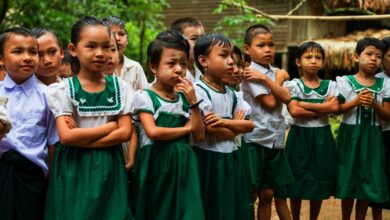
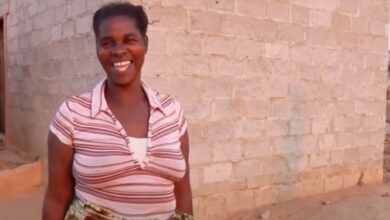
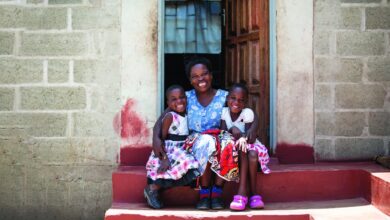
Comments